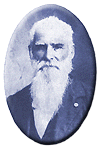
41. Western Folkways

When the Native Americans were placed on reservations, one of the last barriers to western expansion was lifted. The railroad could get people where they wanted to go, and the resources of the West seemed boundless.
How did the typical Westerner make a living? Although migrant settlers had skills too numerous to mention, the most dominant Western industries were mining, ranching, and farming.
"Pikes Peak or Bust!" was the motto of many gold-seekers who ventured west during the 1859 Colorado Gold Rush. Strikes of gold and silver were found in every western territory.
Eastern industry required lead and other precious metals. The inventions of the telephone, light bulb, and dynamo (a massive generator that could pump electricity directly into people's homes) all required copper wiring. New mining techniques presented the possibility for large-scale industry to provide these necessary ores. Life in the western mining towns contributed much to the legendary lore of the American West.
Demand for beef soared after the Civil War. Learning from the Spanish Mexican tradition, cattle ranchers sought their fortunes in Southern Texas. The archetypal American cowboy was needed between 1866 and 1889 to move the steer to market. Life on the open prairies became a reality for thousands of cowhands during the American cattle boom.
By far, the most numerous of western pioneers were the farmers. Seeking a dream of stable existence working a homestead of their own, thousands of migrant families had their dreams dashed by the harsh realities of western life. Nature, isolation, politics, and economics all seemed to work against the hopeful farmer.
Soon farm issues spilled into politics as new groups and political parties formed demanding a better deal for rural America. The nation voted zealously and in larger numbers than ever before when the 1896 election proposed to shift the balance of power in America back to its agricultural roots. But it was not to be. America's future seemed to lie in the direction of the industrial Northeast. But as the 19th century expired, millions of westerners struggled to keep the bucolic past hitched to the present.





